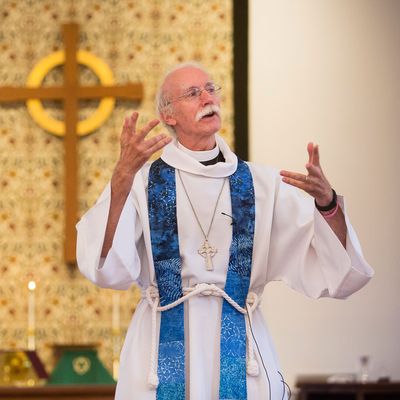
Every time Democrats lose an election, and sometimes even when they win, you hear a lot of wailing and gnashing of teeth about the cluelessness of liberals about religion, as evidenced by the donkey party’s poor showing among white, conservative Evangelical Protestants. Donald Trump’s 81 percent performance among that demographic this year has revved up that particular complaint all over again, as reflected in a long piece at The Atlantic by Emma Green about “the [Democratic] party’s illiteracy on and hostility toward faith.” Green discusses this question exclusively with Michael Wear, a conservative Evangelical who once worked for Obama but is now obviously estranged from Obama’s party. Reading through the piece, a visitor from Mars would be excused for thinking the only Christians (or real Christians) in America are conservative Evangelicals. Yes, there are throw-away references to African-American Christians as a special case, and to “white Catholics” as suffering from the same ignorance and disdain from Democrats. But you would not know that there are an estimated 36 million Americans who are affiliated with the (mostly) white mainline Protestant churches and probably a similar number of “modernist” Catholics who don’t agree with their church’s conservative positions on the very issues Wear and Green are worried about.
This is hardly an isolated example of the invisibility of liberal Christians in American discourse. And they are joined in cultural limbo by millions of religiously observant Jews, Muslims, Hindus, and other people of faith who are typically thought of as belonging to ethnic minorities rather than to a faith community.
Part of the disdain to which liberal Christians in particular are held by both conservative and secular observers is attributable to the steadily declining number of mainline Protestants, for so long America’s dominant group (a problem that many conservative churches are now beginning to experience, perhaps as divine punishment for their endless chortling about the “dying” mainline denominations). But in addition, many years of conservative agitprop has contributed to the perception, which many secular people have uncritically absorbed, that liberal Christians don’t really believe in anything other than trendy social causes. In the Atlantic piece, Wear refers to white liberal Christians as “cultural Christians,” meaning people who are only nominally followers of Jesus Christ.
Whatever the genesis of the strange inability to see liberal Christians and non-Christians as authentically religious, it may be as big a problem for Democrats today as the vast gulf that separates them from conservative Evangelicals.
Exit polls don’t break out non-Evangelical white Christians, though they routinely do provide numbers for “Evangelical” or “born-again” voters (another example of the “invisibility” problem for liberals). But a preelection survey from PRRI showed Trump leading Clinton among white mainline Protestants by ten points, and among white Catholics by seven points. And that was in a poll that had Clinton leading overall by nine points. While some attention has been paid after the election to Trump’s unusually strong performance among white Catholics, his apparent win among mainline Protestants has been ignored almost entirely. In an environment where the two parties are so very closely matched, shouldn’t Democrats show some interest in — and understanding of — people of faith who are unquestionably more sympathetic to the party’s core commitments than conservative religious folk? After all, a clear majority of mainline Protestants, Jews, Hindus, and Buddhists support abortion rights and same-sex marriage. Catholics are more evenly divided on abortion, but are far, far more likely to share the pro-choice views of Democrats than white conservative Evangelicals.
A vote is a vote, and Democrats would be wise to look everywhere for the votes that might have meant victory in 2016. But they should reject the patently false idea that the only people in pews (and other worship settings) they should think about are those who look to Jerry Falwell Jr. and Franklin Graham for political direction. Maybe liberal Christians and non-Christians are not the wave of the future as compared to the religiously unaffiliated and those who are attracted to the culturally reactionary vision of conservative faith communities. But they should be viewed as low-hanging fruit for America’s liberal political party and given at least a fraction of the attention devoted to those who often seem to worship a God as angry as Donald Trump.






























